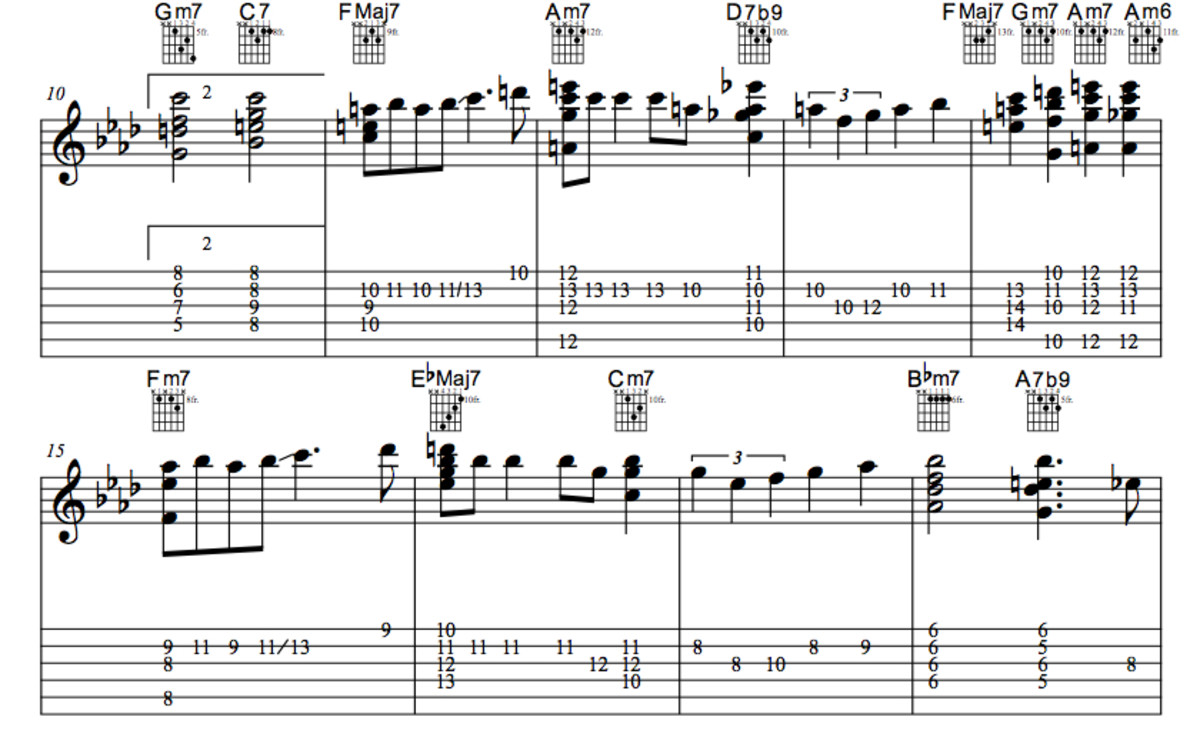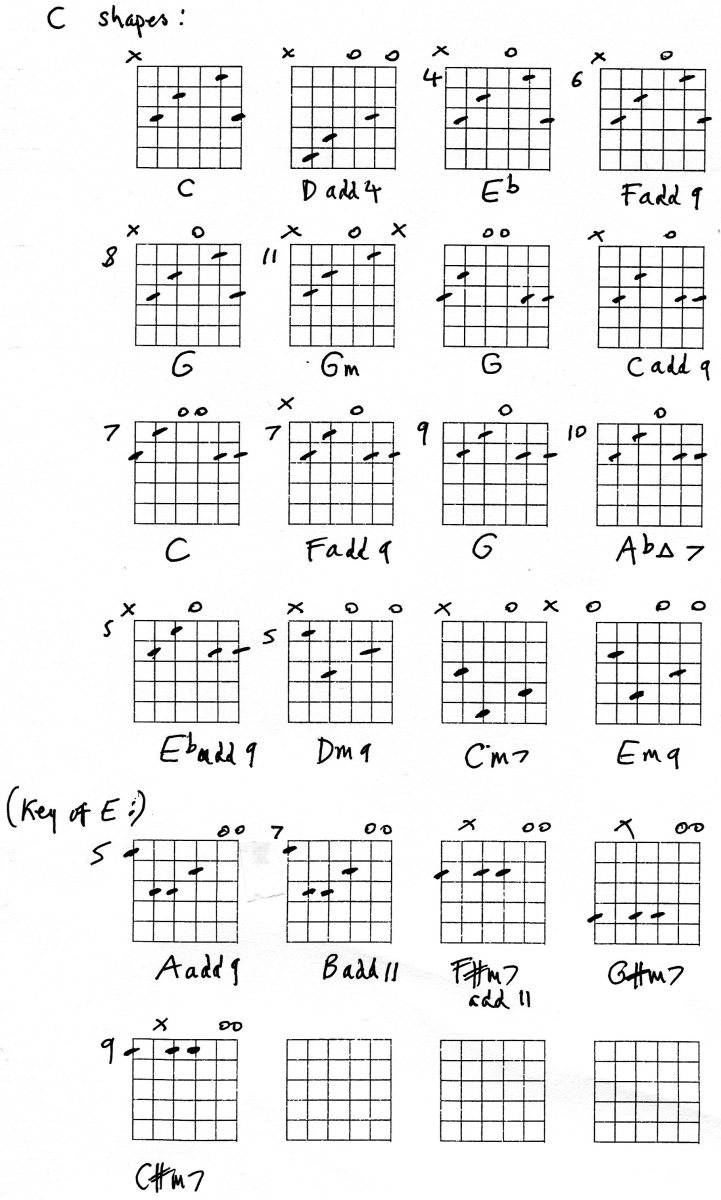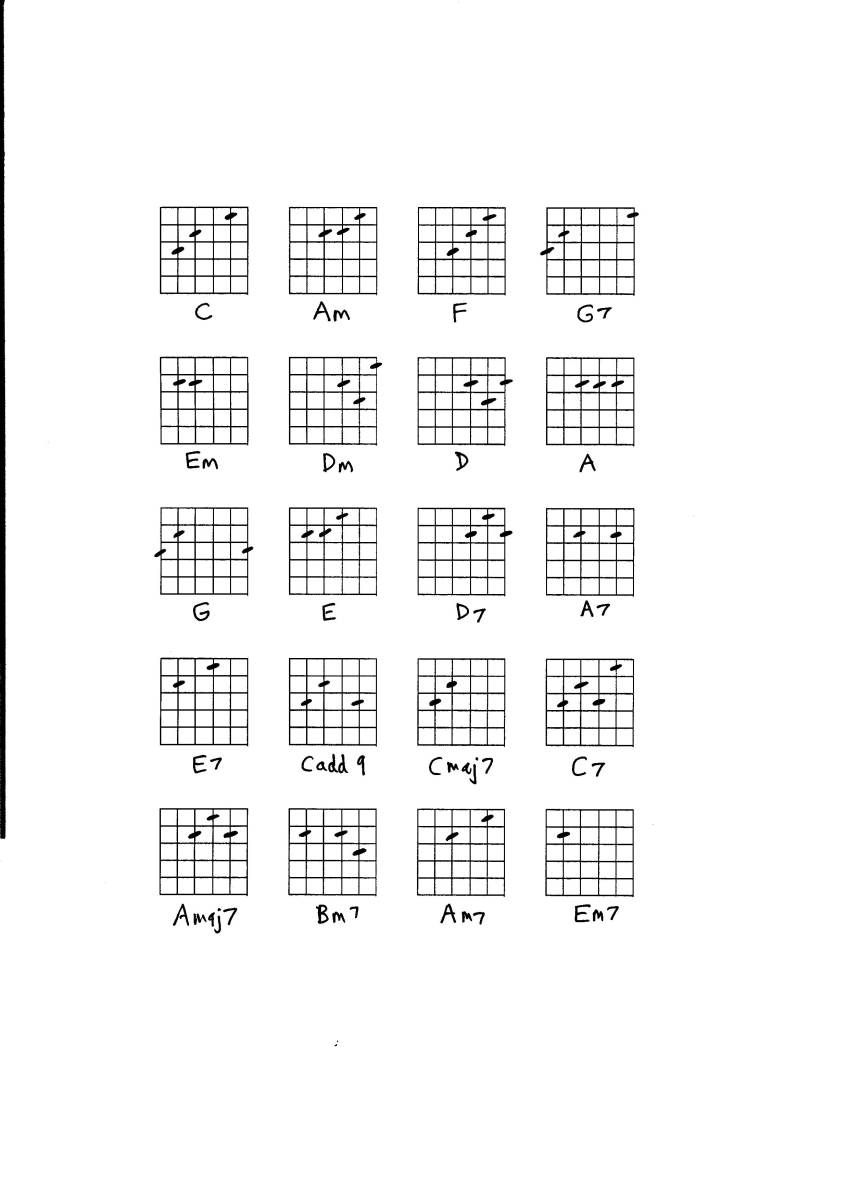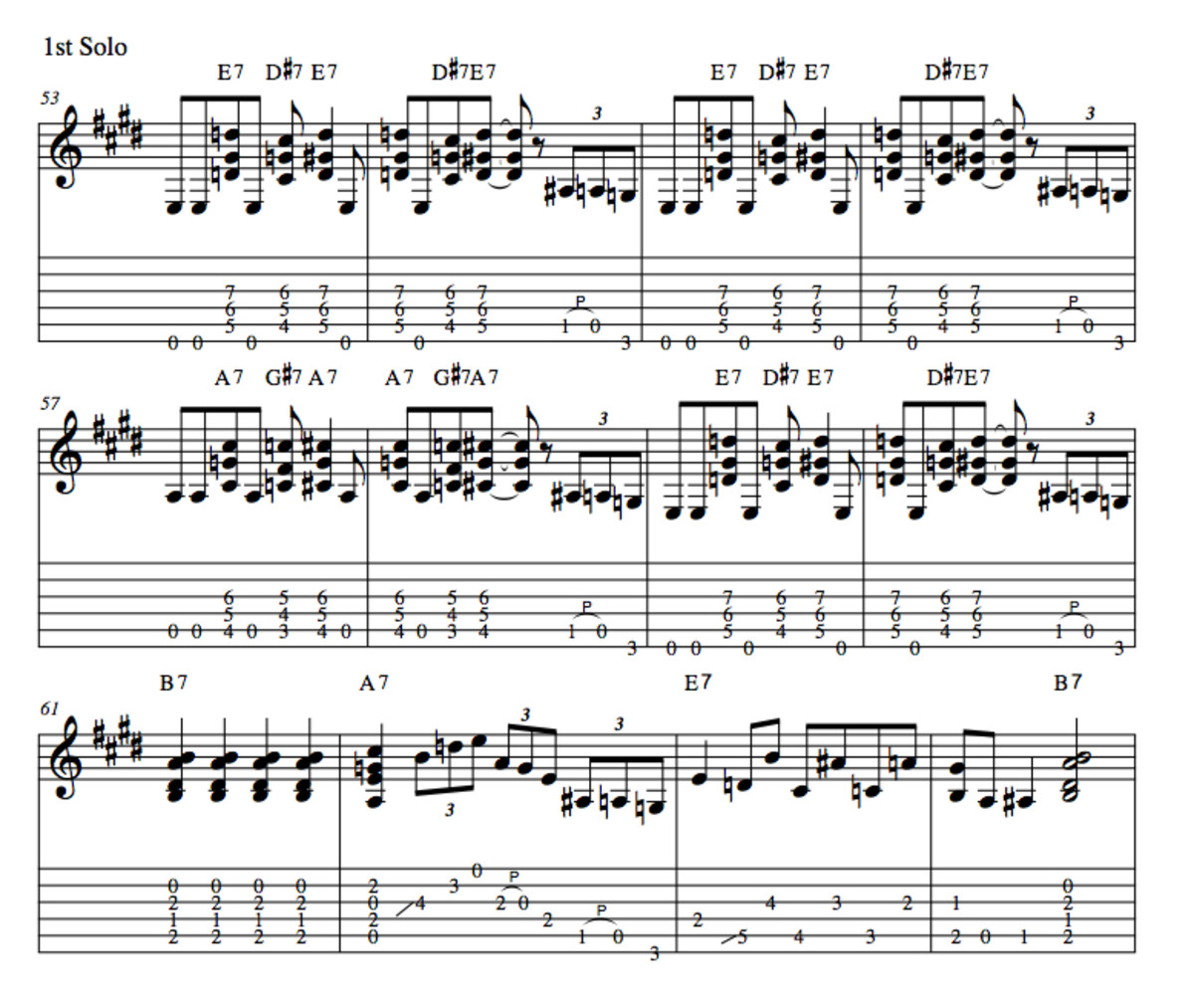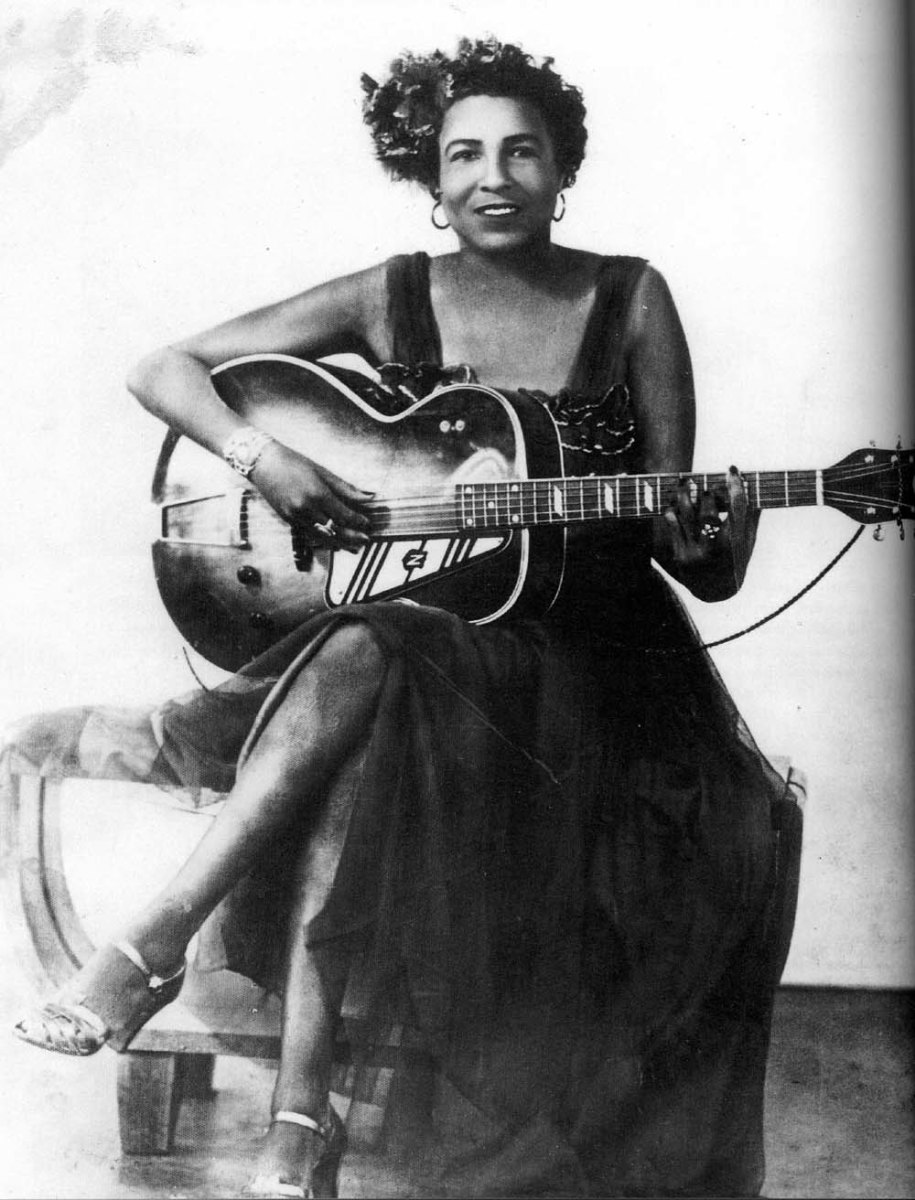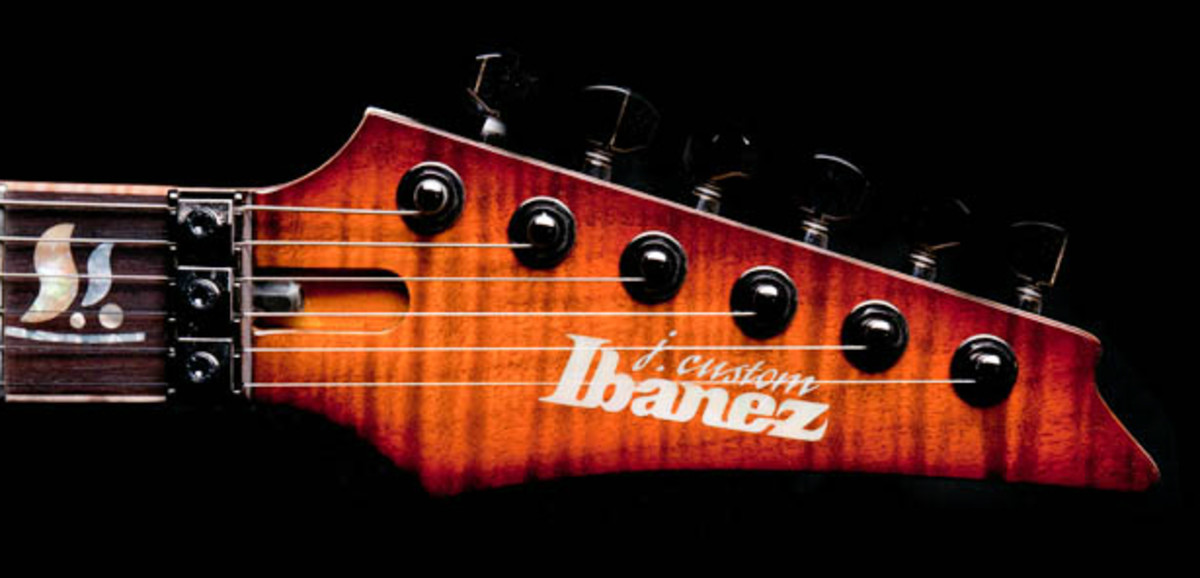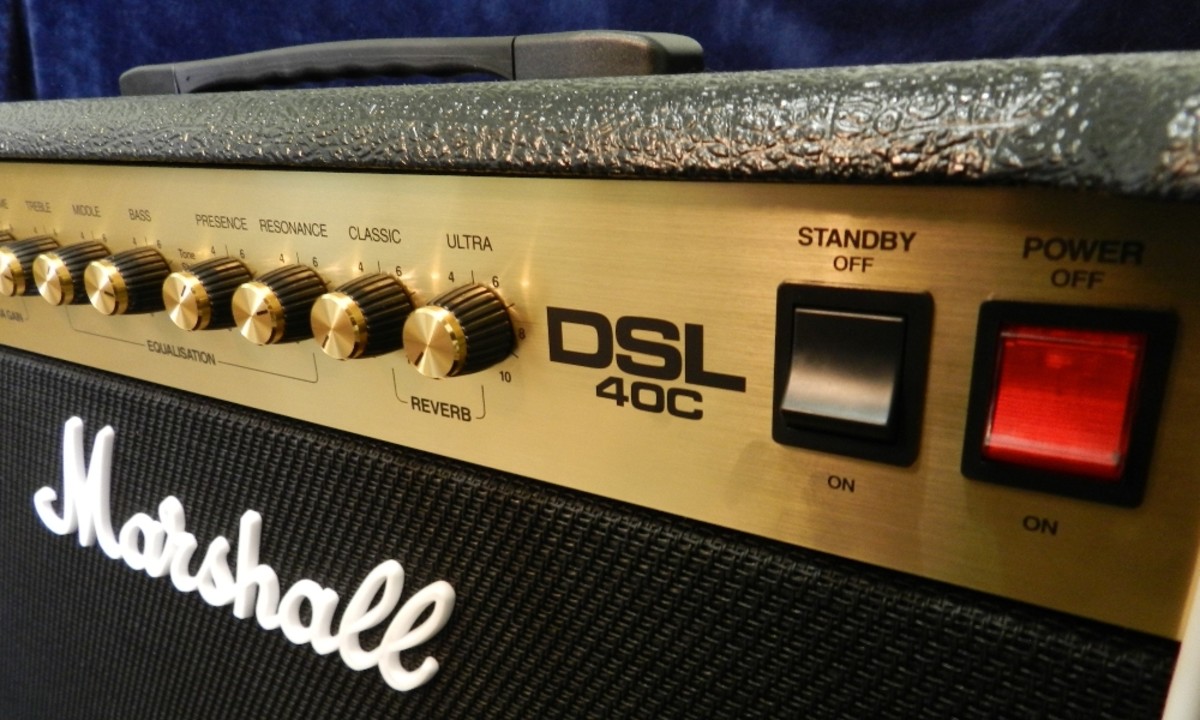Easy Songs Guitar Lesson
Playing guitar in the keys of C and G
Hi - if you are a complete novice on guitar, try my hub First Guitar lesson. First, some basic info - a key is usually the same as the first and last chord in a song, though this is only a general rule. Each key will have a related set of chords, usually up to seven, more on this later.
Two of the most common keys for playing guitar songs are C and G. if you're not already aware of it, some keys are much harder than others on the guitar. In general the sharp keys are the easiest, so most guitar-based songs will be in the keys of G, D, A, E, although C is also common. Changing key or transposing is simple and can make songs easier to play: if you see a song in E flat for example, just take all chords up one fret, or one semitone, and it will be in the key of E instead - and probably much easier to play. Alternatively, take it down one semitone, or one fret and play in the key of D.
Left hand side of the diagram: C
Right hand side: G
The chord examples are in bar lines. Play 4 strums for each bar.
Example 1: common chord sequence (easy) Line 1, 8 bars long
Ex.2: harmonised scale chords in this key - 3 major, 3 minor,1 m7b5 chord. Line 2, 8 Bars long
Ex.3: connecting the chords with a descending bassline. The chord is given first, then bass note. So G/D would be G with a D bassnote.
The major scale, or part of it, is shown for each key at the end.
The non-diatonic chord is one you'll often find added to songs in this key.
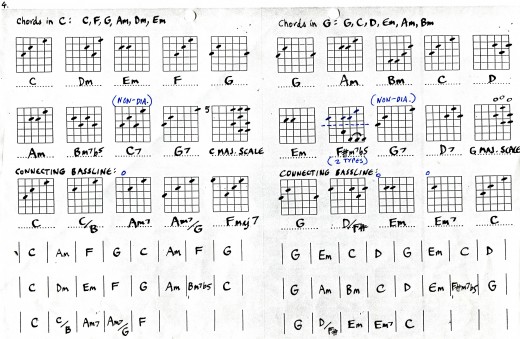
Reading Chord Grids
The vertical lines are the strings, and the horizontal lines are the frets. Make sure the root note of the chord is the lowest note, so for C and Am, avoid the 6th string.
Practical uses
Most ballad -type songs from the world of rock and pop can be played with these chords. Learning them together should dramatically speed up the learning process for all songs.
Let's try an analogy from the building trade. If we forget all the chord names and think about chords as bricks - maybe coloured bricks, it doesn't cost any more. All songs will use the same 7 bricks, we just don't know the order that they will be used in. But knowing what to expect means we understand the construction quite well, even if a few non-standard bricks get added.
Aspects of the theory are explained in my other guitar hubs, or you can ask questions through the comments box anytime.
Descending bassline: this is a good way to connect chords, and generally improve a solid guitar part when accompanying vocals. Use notes from the major scale to bridge any gaps between chords. This works in reverse too, as you can step up the major scale notes between chords - very common in country and bluegrass styles. Going from C to F you could play the single notes D and E to smoothly connect the chords.
A great example of connecting basslines - in Shoot the Moon ( Norah Jones) and also America (Simon and Garfunkel) For No one (Beatles) Whiter Shade of Pale (Procul Harum)
Looking for chord charts? chordie.com is a good source.
Try using a capo, as it will brighten up the tone of acoustics, and also make it much easier to reach the bassline notes. Example: Don't Think Twice, it's Alright, She Belongs to Me (Dylan) In addition, you may find that using a capo in fret 3 or thereabouts will bring down the action of an acoustic and help you to make much faster progress.
Tips on learning guitar songs
The relationship between the I chord and the V chord is always important. 90% of the time, or even more than that, a G7 chord will lead to a C chord, or possibly a C minor chord if we're in a minor key.
In the same way, A7 will lead to D or Dm
B7 will lead to E or Em,
E7 will lead to A or Am,
D7 will lead to G or Gm.
When you understand this it will help you predict the next chord in a song, which is really useful. Music theory describes this chord movement as dominant 7 to tonic.
Another common device is to preface the 7th chord with a II chord, the minor which is two frets higher than the tonic chord, or I chord. This gives you the ii, V, I progression that you'll find everywhere, especially in jazz tunes. In C this would be Dm7, G7, C.
It's the same intervals in all other keys, so D would be: Em7, A7, D.
- Guitar Tabs, Guitar Chords and Lyrics - Chordie
Guitar chords and guitar tabs. Chordie is the largest collection of chords and tabs on the Internet, with more than 200.000 songs from hundreds of artists.

